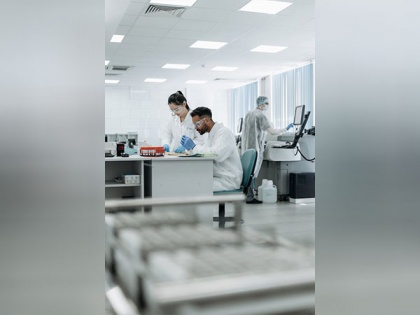Do you know molecular switch controls lipid metabolism? Study finds
By ANI | Published: July 4, 2023 04:20 PM2023-07-04T16:20:41+5:302023-07-04T16:25:10+5:30
Basel [Switzerland], July 4 : Fat metabolism in our bodies is critical for energy generation. A team of researchers ...

Do you know molecular switch controls lipid metabolism? Study finds
Basel [Switzerland], July 4 : Fat metabolism in our bodies is critical for energy generation. A team of researchers from the University of Basel in Switzerland uncovered a molecular switch that controls lipid metabolism in human cells. This switch regulates lipid storage or conversion into energy.
To survive, all species require energy. The many components of our diet provide us with energy. Our bodies consume a portion of this energy immediately and stores the remainder. While glucose is a readily available energy source, fats are kept as an energy reserve within our cells as lipid droplets.
When the body requires energy from these fat reserves, lipids are delivered to the cell's powerhouse, the mitochondria. The lipids are transformed here into ATP (adenosine triphosphate), a critical chemical that provides energy to the cells.
But how much energy does our body need from these energy stores? What proportion of lipids should be converted into ATP? When should this process start and when should it end? The research team led by Professor Anne Spang at the Biozentrum of the University of Basel has investigated lipid metabolism more closely in both yeast and human cells. The scientists discovered that a protein called Arf1 works like a molecular switch, regulating these processes. The results have recently been published in "Nature Cell Biology".
"Arf1 is a familiar protein to us. We already know that it has several functions in the Golgi apparatus, the cell's sorting station. We have now discovered that Arf1 also plays a role in regulating energy metabolism in the mitochondria", explains Dr. Ludovic Enkler, first author of the study. "Arf1 ensures the transport of lipids from lipid droplets to mitochondria." The researchers assume that Arf1 alters the environment of the contact site between the lipid droplets and mitochondria, enabling lipids to enter the mitochondria.
When the body signals a need for energy, Arf1 allows lipids to enter the mitochondria. Once the energy demand is met, the transport is stopped. "Thus, the system only works when the feedback loop of the energy requirements works," said Ludovic Enkler.
"However, if the Arf1 protein is absent or overactive, the entire system gets out of balance," explains Anne Spang. "In both cases, the feedback control between demand and production does not work, leading to insufficient ATP energy supply. Consequently, fatty acids accumulate in lipid droplets."
The sensitivity and intricate complexity of the lipid metabolism become evident when considering various lipid metabolism disorders. Even the smallest errors in lipid metabolism can lead to high cholesterol levels (blood lipid levels), increasing the risk of cardiovascular diseases, obesity, or diabetes.
Using advanced techniques such as spatial proteomics, which can be used to study all proteins on different cellular structures, the research team aims to identify individual components involved in the feedback process of Arf1 protein in the cells. Their goal is to unravel lipid trafficking at the contact sites between lipid droplets and the mitochondria in detail.
Disclaimer: This post has been auto-published from an agency feed without any modifications to the text and has not been reviewed by an editor
Open in app